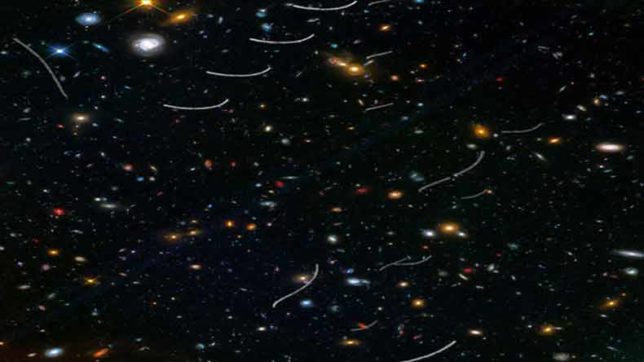Washington: Asteroids in our solar system that are about 160 million miles away from Earth got in the way while NASA’s Hubble Space Telescope was taking deep images of the universe, the US space agency reported.
The asteroids made their way into Hubble’s picture called Frontier Fields of thousands of galaxies scattered across space and time at inconceivably farther distances.
Hubbles’s Frontier Fields show colourful images that contain thousands of galaxies, including massive yellowish ellipticals and majestic blue spirals, smaller and fragmentary blue galaxies sprinkled throughout the field.
However, asteroid trails that appear as curved or S-shaped streaks intruded into the picture.
The trails look curved due to an observational effect called parallax. As Hubble orbits around Earth, an asteroid will appear to move along an arc with respect to the vastly more distant background stars and galaxies.
Rather than leaving one long trail, the asteroids appear in multiple Hubble exposures that have been combined into one image, the scientists noted.
Using a different camera, pointing in a slightly different direction, Hubble photographed six so-called “parallel fields” at the same time it photographed the massive galaxy clusters.
Out of the 20 total asteroid sightings, seven were found to be unique objects.
Further, out of these seven asteroids, only two were earlier identified. The others were too faint to be seen previously.
All these asteroids were found manually, the majority by “blinking” consecutive exposures to capture apparent asteroid motion. Astronomers found a unique asteroid for every 10 to 20 hours of exposure time, the report said.
IANS

